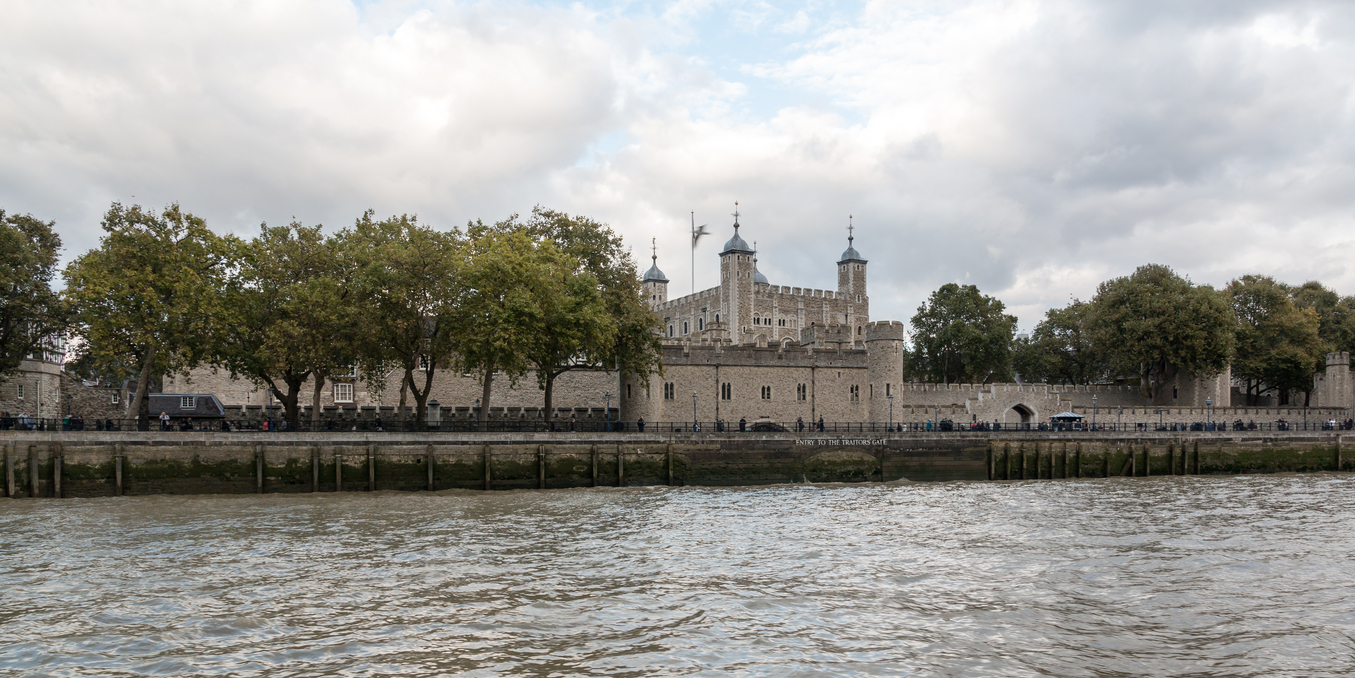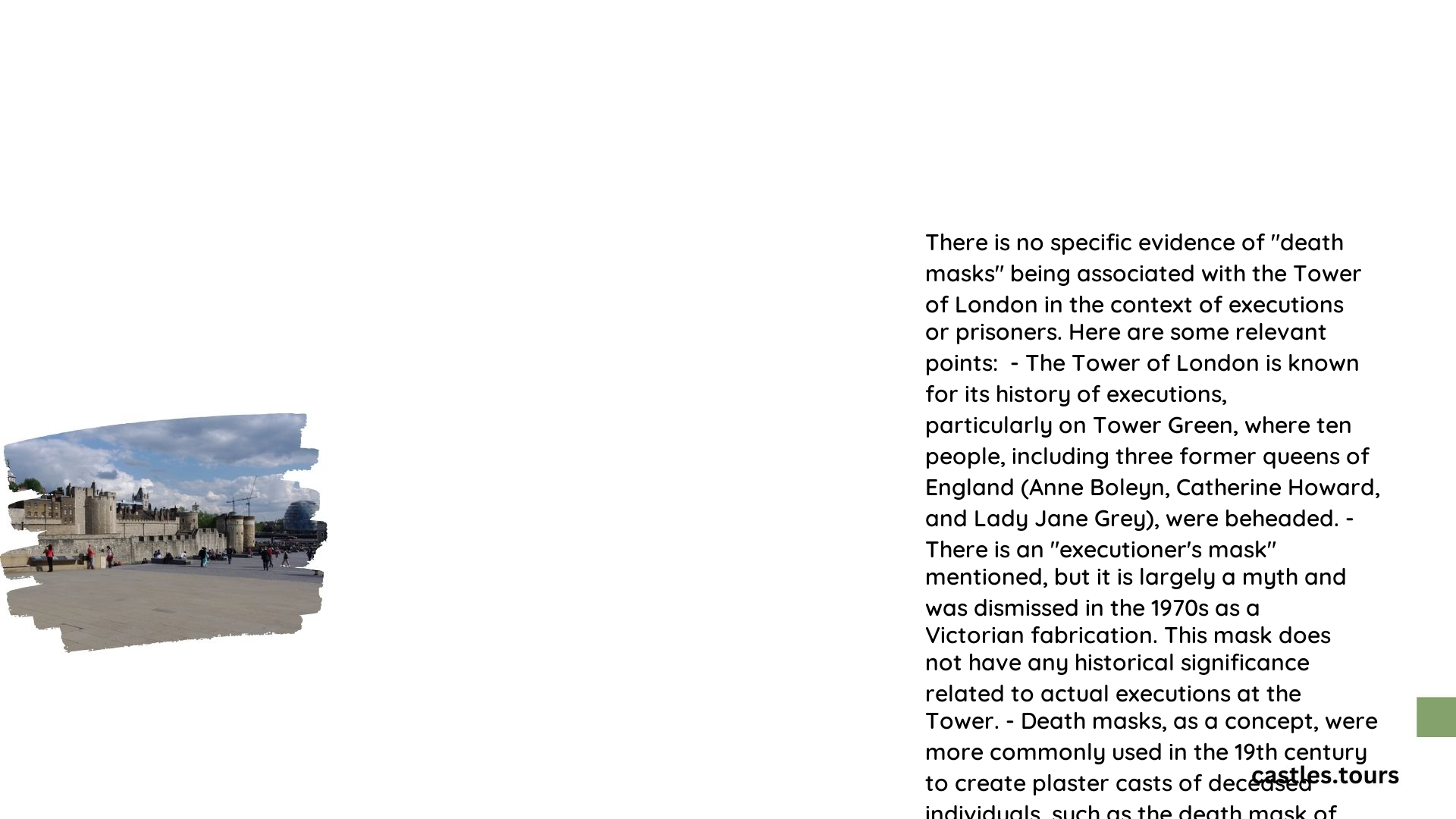The Tower of London, a fortress with a dark history of executions, has long been associated with death masks and executioner’s masks. However, the reality is more complex than popular myths suggest. Death masks were used for funeral effigies of notable figures, while executioner’s masks are largely considered historical misinterpretations. This article explores the truth behind these artifacts and their connection to the Tower’s grim past.
What Were Death Masks Used for at the Tower of London?

Death masks at the Tower of London served a specific purpose, primarily for creating funeral effigies of royalty and nobility. These masks were not directly related to executions but were part of elaborate funeral rites.
- Purpose: To create lifelike representations of the deceased
- Process: Plaster cast made of the face shortly after death
- Use: Served as a model for sculptors creating funeral effigies
Notable Examples:
- Henry VII’s death mask
- Oliver Cromwell’s death mask (though not directly related to the Tower)
Did Executioners at the Tower of London Wear Masks?

Contrary to popular belief, historical evidence suggests that executioners at the Tower of London did not typically wear masks during executions.
- Misconception: Executioners wore masks to hide their identity
- Reality: Skilled executioners were often known and sometimes brought from abroad
- Focus: Emphasis was on the executioner’s skill rather than anonymity
Example:
Anne Boleyn’s execution in 1536 was carried out by a skilled swordsman from France, with no mention of a mask in historical records.
What Are the Origins of the Executioner’s Mask Myth?
The myth of executioner’s masks at the Tower of London likely stems from a combination of factors:
- Victorian-era fascination with the macabre
- Misinterpretation of historical artifacts
- Conflation of different historical periods and practices
Misinterpreted Artifacts:
- Iron mask exhibited at the Tower, likely a scold’s bridle or punitive device
- Masks in the Wellcome Collection, now considered historical forgeries
How Are Execution-Related Artifacts Displayed at the Tower?
The Tower of London, managed by Historic Royal Palaces, presents execution-related artifacts as part of its historical exhibitions:
| Exhibit | Description |
|---|---|
| Tower Green | Site of private executions |
| Scaffold Site | Replica of execution platform |
| Axe and Block | Tools used in beheadings |
These displays aim to educate visitors about the Tower’s history without sensationalizing the grim aspects of executions.
What Cultural Significance Do These Artifacts Hold?
The artifacts and myths surrounding Tower of London death masks and executions reflect broader cultural attitudes:
- Historical Attitudes: Reveal past approaches to punishment and justice
- Victorian Influence: Demonstrate 19th-century fascination with Gothic themes
- Modern Interpretation: Challenge misconceptions about historical practices
Impact on Popular Culture:
- Inspiration for literature and film
- Subject of historical debates and research
- Attraction for tourists and history enthusiasts
How Do These Artifacts Contribute to Our Understanding of Tudor History?
While death masks and executioner’s masks may not have played the roles often attributed to them, they contribute to our understanding of Tudor history in several ways:
- Funeral Practices: Death masks illuminate royal funeral customs
- Execution Methods: Authentic artifacts reveal the reality of Tudor-era executions
- Historical Misconceptions: Highlight the importance of critical analysis in historical study
Key Insights:
- Emphasis on skilled executioners rather than anonymous figures
- Importance of public spectacle in Tudor justice system
- Evolution of historical interpretation over time
What Measures Are Taken to Preserve These Historical Artifacts?
Preservation of execution-related artifacts at the Tower of London involves:
- Climate-controlled environments
- Regular conservation assessments
- Limited exposure to light and handling
Preservation Challenges:
- Balancing public access with artifact protection
- Maintaining historical accuracy in displays
- Addressing misconceptions about artifacts’ origins and uses
How Can Visitors Experience These Artifacts at the Tower of London?
Visitors to the Tower of London can experience execution-related history through:
- Guided tours focusing on the Tower’s dark history
- Interactive exhibits explaining execution practices
- Viewing of authentic and replica artifacts
Visitor Experience:
- Included in general admission to the Tower
- No additional cost for specific mask exhibits (as they are not authentic)
- Educational programs providing historical context
What Future Research Could Reveal About Tower of London Death Masks?
Future research into Tower of London death masks and execution practices could focus on:
- Archaeological excavations at execution sites
- Advanced analysis of existing artifacts
- Comparative studies with other historical sites
Potential Discoveries:
- New insights into Tudor-era execution methods
- Better understanding of historical misconceptions
- Improved techniques for artifact authentication
The Tower of London’s connection to death masks and executioner’s masks remains a subject of fascination and historical inquiry. While many popular beliefs about these artifacts have been debunked, they continue to offer valuable insights into Tudor history, cultural attitudes towards death and punishment, and the evolution of historical interpretation.
References:
1. https://bilderfahrzeuge.hypotheses.org/3587
2. https://www.hrp.org.uk/banqueting-house/history-and-stories/the-execution-of-charles-i/
3. https://www.hrp.org.uk/tower-of-london/whats-on/tower-green-scaffold-site/
